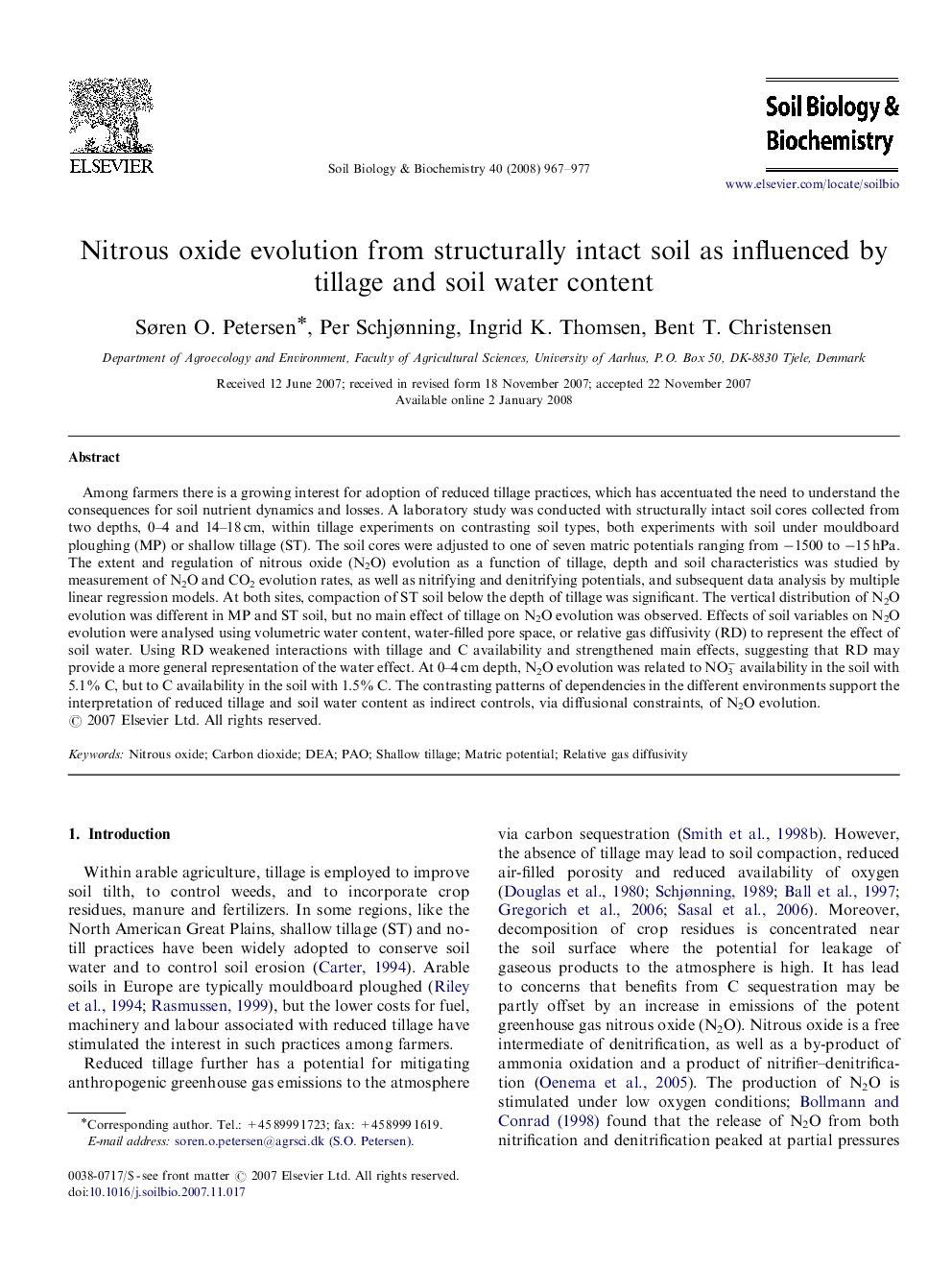| Article ID | Journal | Published Year | Pages | File Type |
|---|---|---|---|---|
| 2026449 | Soil Biology and Biochemistry | 2008 | 11 Pages |
Among farmers there is a growing interest for adoption of reduced tillage practices, which has accentuated the need to understand the consequences for soil nutrient dynamics and losses. A laboratory study was conducted with structurally intact soil cores collected from two depths, 0–4 and 14–18 cm, within tillage experiments on contrasting soil types, both experiments with soil under mouldboard ploughing (MP) or shallow tillage (ST). The soil cores were adjusted to one of seven matric potentials ranging from −1500 to −15 hPa. The extent and regulation of nitrous oxide (N2O) evolution as a function of tillage, depth and soil characteristics was studied by measurement of N2O and CO2 evolution rates, as well as nitrifying and denitrifying potentials, and subsequent data analysis by multiple linear regression models. At both sites, compaction of ST soil below the depth of tillage was significant. The vertical distribution of N2O evolution was different in MP and ST soil, but no main effect of tillage on N2O evolution was observed. Effects of soil variables on N2O evolution were analysed using volumetric water content, water-filled pore space, or relative gas diffusivity (RD) to represent the effect of soil water. Using RD weakened interactions with tillage and C availability and strengthened main effects, suggesting that RD may provide a more general representation of the water effect. At 0–4 cm depth, N2O evolution was related to NO3− availability in the soil with 5.1% C, but to C availability in the soil with 1.5% C. The contrasting patterns of dependencies in the different environments support the interpretation of reduced tillage and soil water content as indirect controls, via diffusional constraints, of N2O evolution.
